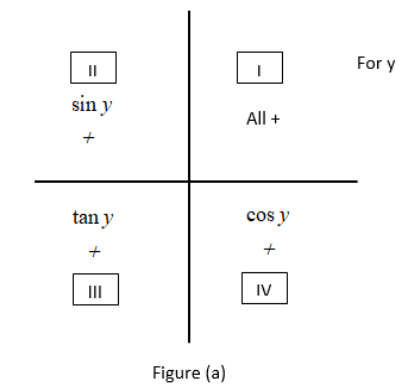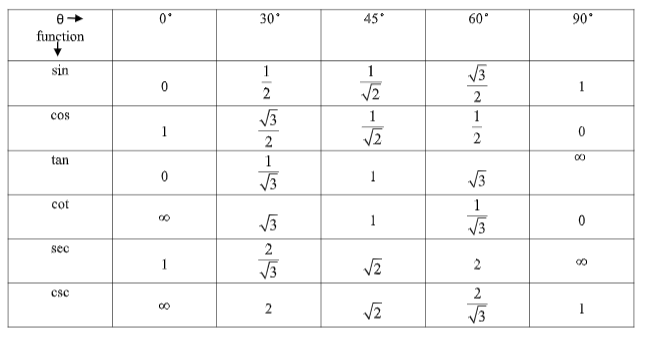
Find the value of $\tan 300^\circ $
Answer
543.9k+ views
Hint:We are given a trigonometric function of tangent with an angle of $300$ degrees and we have to find its value. For this we use the Cartesian plane for trigonometric functions’ sine i.e. positive or negative and use the standard table of trigonometric functions value at particular angles.
Complete solution step by step:
Firstly we write down the expression of which we are supposed to find the value
$\tan 300^\circ $
We are given a tangent function whose argument is provided as 300 degrees now we have to see that in which quadrant it lies so that we can get which sign it will take after converting it into standard degree angles whose values are known to us for all six functions. We understand this by the below simplification and given figure (a) i.e.
$\tan 300^\circ = \tan \left( {360^\circ - 60^\circ } \right)$
We can see that it lies in the fourth quadrant. Now we look at the figure and conclude which sign it will take with it after conversion i.e.

We can clearly see that tangent is positive in third quadrant and first quadrant and it will be negative in the fourth quadrant so we have
$\tan 300^\circ = \tan \left( {360^\circ - 60^\circ } \right) = - \tan 60^\circ $
We have simplified the value of tangent into standard angle value. Now looking this value up in the below table

We have
$ - \tan 60^\circ = - \sqrt 3 $
This is the final outcome of the given tangent function.
Note: Wherever possible conversion of trigonometric functions should be done with respect to either $180^\circ $ or$0^\circ ,360^\circ $ for simpler calculations. Because this conversion does not lead to conversion of function such as sine converts into cosine which happens while doing so with $90^\circ \,{\text{or}}\,270^\circ $.
Complete solution step by step:
Firstly we write down the expression of which we are supposed to find the value
$\tan 300^\circ $
We are given a tangent function whose argument is provided as 300 degrees now we have to see that in which quadrant it lies so that we can get which sign it will take after converting it into standard degree angles whose values are known to us for all six functions. We understand this by the below simplification and given figure (a) i.e.
$\tan 300^\circ = \tan \left( {360^\circ - 60^\circ } \right)$
We can see that it lies in the fourth quadrant. Now we look at the figure and conclude which sign it will take with it after conversion i.e.

We can clearly see that tangent is positive in third quadrant and first quadrant and it will be negative in the fourth quadrant so we have
$\tan 300^\circ = \tan \left( {360^\circ - 60^\circ } \right) = - \tan 60^\circ $
We have simplified the value of tangent into standard angle value. Now looking this value up in the below table

We have
$ - \tan 60^\circ = - \sqrt 3 $
This is the final outcome of the given tangent function.
Note: Wherever possible conversion of trigonometric functions should be done with respect to either $180^\circ $ or$0^\circ ,360^\circ $ for simpler calculations. Because this conversion does not lead to conversion of function such as sine converts into cosine which happens while doing so with $90^\circ \,{\text{or}}\,270^\circ $.
Recently Updated Pages
Why are manures considered better than fertilizers class 11 biology CBSE

Find the coordinates of the midpoint of the line segment class 11 maths CBSE

Distinguish between static friction limiting friction class 11 physics CBSE

The Chairman of the constituent Assembly was A Jawaharlal class 11 social science CBSE

The first National Commission on Labour NCL submitted class 11 social science CBSE

Number of all subshell of n + l 7 is A 4 B 5 C 6 D class 11 chemistry CBSE

Trending doubts
What is meant by exothermic and endothermic reactions class 11 chemistry CBSE

10 examples of friction in our daily life

One Metric ton is equal to kg A 10000 B 1000 C 100 class 11 physics CBSE

1 Quintal is equal to a 110 kg b 10 kg c 100kg d 1000 class 11 physics CBSE

Difference Between Prokaryotic Cells and Eukaryotic Cells

What are Quantum numbers Explain the quantum number class 11 chemistry CBSE




